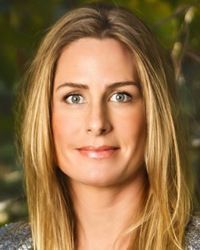Webware, SaaS, WebTops, Cloud Computing, and Wapps
If there is another Internet wave coming - a Web 3.0, a Bubble 3.0, or even a recessionary surge – it will surely involve a focus on stronger business models than ones dependent on social networks or pure ad plays. You have to believe that if everyone is chasing advertising technology, ad networks, and ad supported business models then, it is time to go the other way.
The other way might be an interesting convergence of the history of personal computing, the adoption of online technologies, and the rise of mobility as a major driver of Internet technologies. Personal computers, PCs, didn’t so much replace monolithic client-server architectures such as mainframes and minis, and their connected terminals, rather than enable power to trickle down into the hands of smaller organizations, and to give individuals computing resources that were the reserve of big corporations.
By the same token, online technology has allowed small organizations, and individuals, to have access to vast arrays of communications power, resources, and audiences. Wireless broadband adoption and technology is not far off from where DSL and cable modems were at the end of the last decade. Perhaps, we will have broadband mobility by the middle of the next decade at the same comparable levels of adoption as we have fixed broadband today. In other words, whatever we do now off of a laptop or desktop, we will do off of a mobile device, a bit like a Blackberry on Crack, which would make it a Crackberry Squared, I believe.
What’s great about this opportunity is that mobile solutions deliver services and bill for them in a way that suits subscription services quite nicely. And the innovators that stand to gain the most from this opportunity are going to be the growing cluster of companies that run your applications for you on hosted servers, or as managed services, allowing you to stay light, nimble, and free from IT overheads, while continuing to benefit from all of the power of a highly centralized, monolithic computing infrastructure.
In SoCal there are companies like Citrix Online and AppFolio in Santa Barbara, CrownPeak in Los Angeles, and OptionEase in San Juan Capistrano that provide applications that can be called anything from Software as a Service (SaaS), to WebTop Applications. I am sure you have heard of the term Cloud Computing applied to services that, in theory, harness the power of servers connected to the Internet for specific computational tasks, and out of a sense of frustration, I like to use the term Wapps to try and clump all this together.
Putting aside the taxonomy issues, there are clear trends that are making themselves apparent in very lucrative vertical markets: you take an application or service that required an installation on someone’s hard drive or servers, and you put it on your centralized servers. No more version tracking or waiting for upgrades. No maintenance issues. Everything is rolled up in one, neat monthly subscription. If you are still buying software from a store and loading up on a PC, you may be beginning to feel your age.
However, this transitioning of software applications to a subscriber-service provider model isn’t for everyone. But, it does bring significant application scale to small companies, much in the same way as the PC brought powerful computing tools to the masses. Everyone can have their own IT department. The more resources and power that SMBs get, the more likely it is that we will, see a shift in economic power from monolithic computer companies to specialized, vertical application providers online. Microsoft cannot compete with this growing cadre of software developers, and they are less reliant on Microsoft than any software developer has had the opportunity to be in the last twenty years. In addition, being primarily driven by the browser interface, and the Internet, these applications can go into all kinds of places, and at all kinds of different levels of expectation. A PC, a cell phone, or any other device that comes along is a target, and if we venture a guess at the TAM for this market, it outstrips the one for computing by many factors.
There is a lot of movement in the world of Wapps. You can argue whether their time has truly arrived, but they’ve been waiting around since Sun Microsystems started hyping Java back in the 90s. Yes, they didn’t kill Microsoft then, and they probably won’t now, but Java was a great part of Bubble 1.0. Bubble 3.0 is going to be a more mature, sane, lucrative bubble than all of the others. Bubble 2.0 has proven to be quite sensible compared to its predecessor so, we have some historical precedence. If you follow the silicon, and the storage, and the data, you’ll probably feel just as confident in the emergence of Wapps, as I do.
Omid Rahmat was CEO of Tom’s Guide Publishing, which was sold to a European publishing house in 2007. Presently, he resides in Thousand Oaks, where he is working on Why Be Happy, a new online publishing company.
 Tony Greenberg
Tony Greenberg
 Ivan Nikkhoo, Managing Partner – Navigate Ventures
Ivan Nikkhoo, Managing Partner – Navigate Ventures Michael Sherman, Neil Elan and Karine Akopchikyan
Michael Sherman, Neil Elan and Karine Akopchikyan Alejandro Guerrero
Alejandro Guerrero Eric Eide, Alliance for SoCal Innovation
Eric Eide, Alliance for SoCal Innovation Kevin DeBre
Kevin DeBre Braven Greenelsh
Braven Greenelsh Rob Freelen, Los Angeles Market Manager, Silicon Valley Bank
Rob Freelen, Los Angeles Market Manager, Silicon Valley Bank Braven Greenelsh
Braven Greenelsh Kaäre Wagner, Silicon Valley Bank
Kaäre Wagner, Silicon Valley Bank Al Guerrero, Silicon Valley Bank
Al Guerrero, Silicon Valley Bank Rob Freelen, Los Angeles Market Manager, Silicon Valley Bank
Rob Freelen, Los Angeles Market Manager, Silicon Valley Bank Sid Mohasseb
Sid Mohasseb William Hsu
William Hsu Braven Greenelsh
Braven Greenelsh Dinesh Ravishanker
Dinesh Ravishanker Dina Lozosfky
Dina Lozosfky Melinda Moore
Melinda Moore Ivan Nikhoo
Ivan Nikhoo Jaspar Weir
Jaspar Weir Erik Caso
Erik Caso Tracy Olmstead Williams
Tracy Olmstead Williams Dave Berkus
Dave Berkus Bernard Luthi
Bernard Luthi Peter Cowen
Peter Cowen Nick Hedges
Nick Hedges Eric Larsen
Eric Larsen Michael Terpin
Michael Terpin Steve Reich
Steve Reich